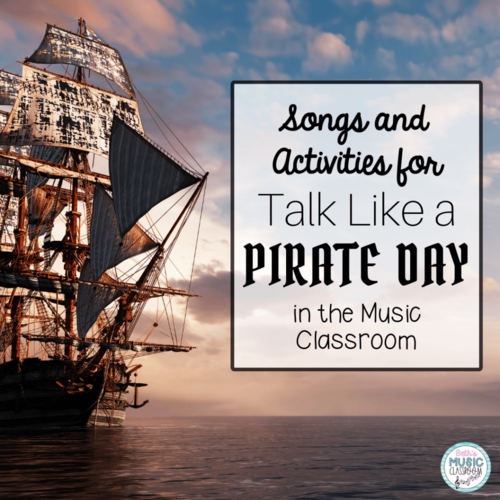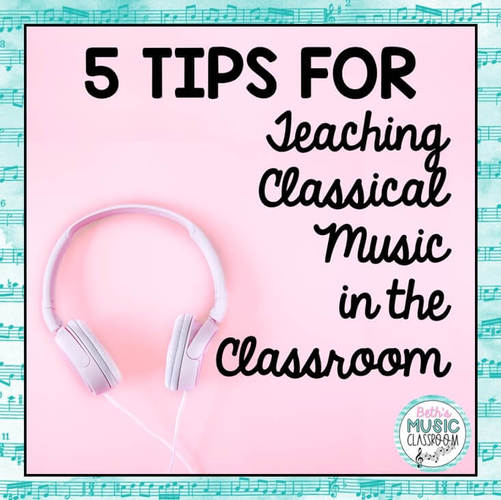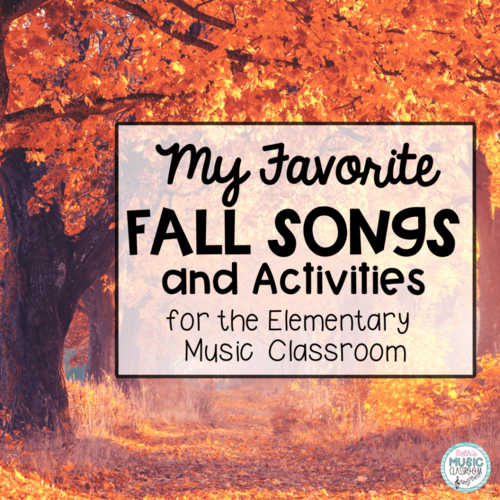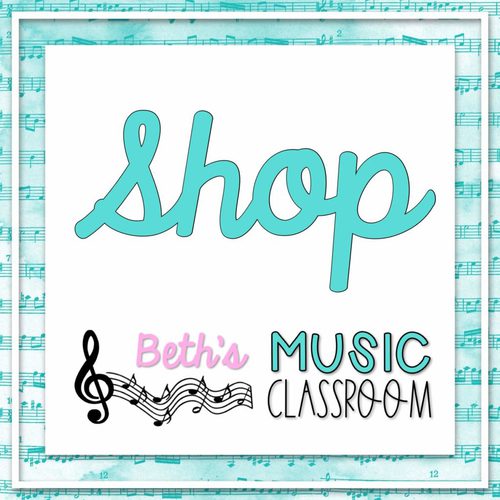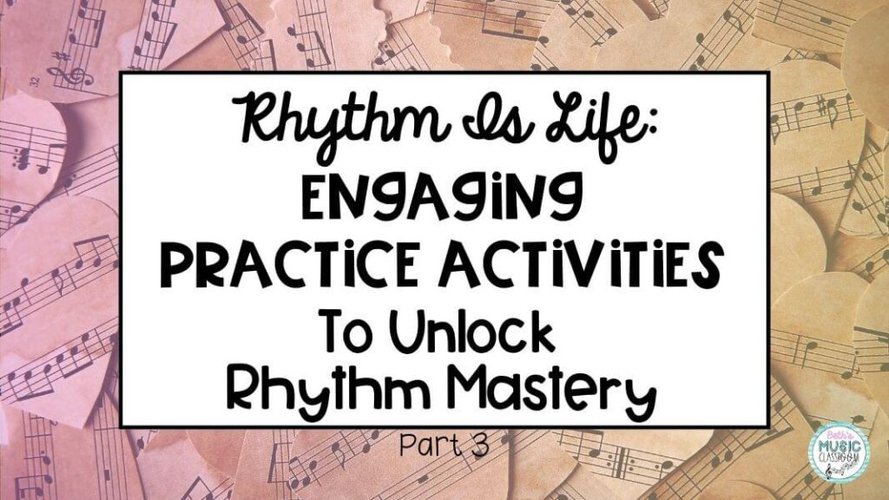
Welcome! If you’re new around here, I’m so glad you’re joining me today. Also, if you haven’t read parts 1 or 2 of this teaching rhythm series, I would suggest starting with those first. In the first post (click here to read), I discuss the benefits of teaching rhythm using the 3 P’s of the Kodaly method. Then in the second post (click here to read), you’ll find some real-life ways to present rhythm to students. Now let’s jump into this post, which is all about the “present moment” and exciting activities for rhythm practice.
Presenting a New Rhythm
After lots of fun and diverse ways of preparing rhythm with young students, they are ready for the presentation of new rhythms. Up to this point, you have never mentioned notes, ta ti-ti, or du du-de, or anything but colors, shapes, and fun holiday items (definitely read part 2 if you’re curious about this). Now it’s time – the moment – a very brief statement – to “make conscious.”
Let’s jump into an example. As students look at a pre-reading activity for fall, I say “The ‘leaf’ has one sound, and we will call him ‘ta’ or ‘du.’ Composers call it a quarter note, and it looks like this.” You can use this no matter what system you prefer – just insert the name you prefer. “And instead of saying ‘acorn’ for two sounds, we call that ‘ti-ti’ – or eighth notes in the big kid language.”
And the present moment is basically over. It’s what I call the “drumroll” for students to learn the big-kid way. I love calling it that too, because my students enjoy learning it and feel very special whenever they read it. When I present a new rhythm using a certain holiday themed pre-reading activity, I explain that Halloween or Christmas is over, so we can’t say “candy-corn” any more. Often, I’ll tell my kindergarteners they just learned something that 1st graders know, so they need to sit up a bit taller now. They eat it up!
The Rhythm Practice Begins
Now we are on to some rhythm practice activities. For each of the three stages, I love using “Engine, Engine, Number Nine.” During preparation, I added a chant to have students read the iconic notation using the colors blue and yellow. This worked really well during virtual learning. Students could see the patterns easily on their screen, and even if they were on mute, they could still say it with me.
But now during the presentation and practice stage, I change it a bit because I want them reading quarter and 8th notes! The chant now goes: “Since you know the big kid way, can you say it back today?” Students feel so special with this, and they love showing off what they’ve learned.

Get your freebie here to help you prepare, present, and practice rhythm with your students!
Now, even in a regular classroom setting, I love using this chant as a rhythm practice activity. Want to use it with your students too? Get your own copy for free right here!
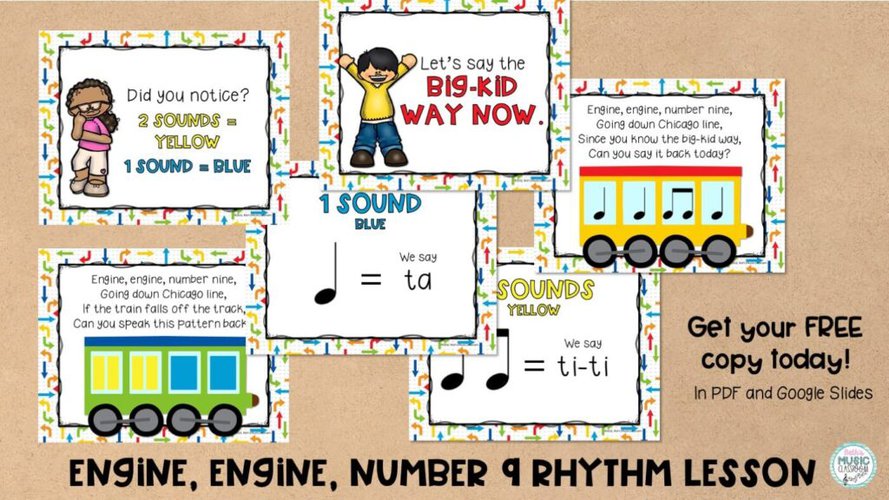
Early Rhythm Practice
Here’s a list of some early rhythm practice activities. You can find some amazing YouTube videos of rhythm play alongs. I have found many creators have different versions or levels, including iconic notation, then the simple, intermediate, etc. with different note values. Here’s a few great YouTube creators to check out:
You can find a few rhythm practice videos on my YouTube channel also. Find my music education channel by clicking here!
Practice with Instruments
Another practice activity that my students love is to play instruments along with a song, accompanying it. With kindergarten and first grade, I select one rhythm for half the class to play on a percussion instrument, while the other half is singing a song. As the year goes on and their confidence grows, I may choose 2-3 different parts along with a simple bordun.
With 2nd grade and older, add 3 or more ostinato, and encourage them to sing along while playing. At first, it may be hard for them, but they will build that rhythmic independence and improve with practice.
Mid/Late Rhythm Practice Activities
After the initial practice, students may be ready for slightly more difficult activities. These will help them become more confident in reading rhythm. Choose a variety of different types of activities. Rather than continuing to merely read rhythms, some other rhythm practice activities could include:
- Matching game: match short phrases of iconic notation with rhythmic notation
- Decoding: listen to a phrase and determine the matching rhythm
- Performing: play as a whole class or small group to accompany a song
- Writing: practice how to write the notes on paper
- Improvising: play question-answer partner game
- Composing: create simple 4 or 8-beat phrases
Check out some of the rhythmic activities that I use with my students by visiting my TpT store. If you missed the first two parts of this series, you may find value in going back and reading them. You can find them here:
- Rhythm Is Life: Starting Off Right with the 3 P’s of the Kodaly Method
- Rhythm Is Life: Preparation Strategies that will Transform Your Lessons
This is the end of my 3-part series on teaching rhythm to beginners. Having a collection of rhythm practice activities for lots of holidays and themes has been so helpful to me over the past few years. Many of the activities and topics mentioned here are included in my Pre-Reading Rhythm Bundle which you can find more about right here.
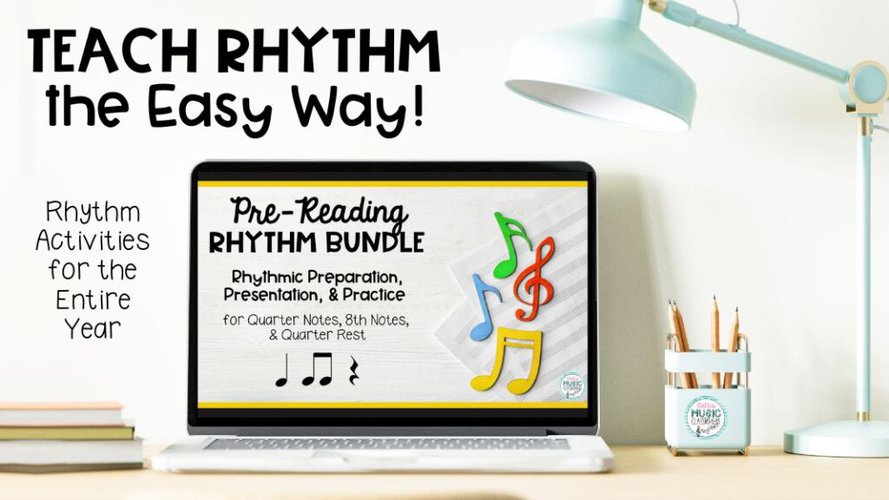
I hope you found this series helpful and can use some activities in your own classroom!
Have you used any of these rhythmic activities with your students? Let me know by commenting below, emailing me (beth@bethsmusicclassroom.com), or heading over to @bethsmusicclassroom on Instagram to let me know.

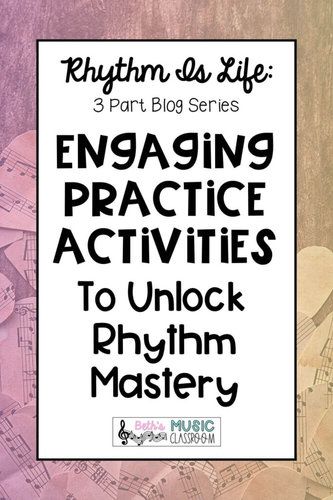
Here’s some other posts you may like.
